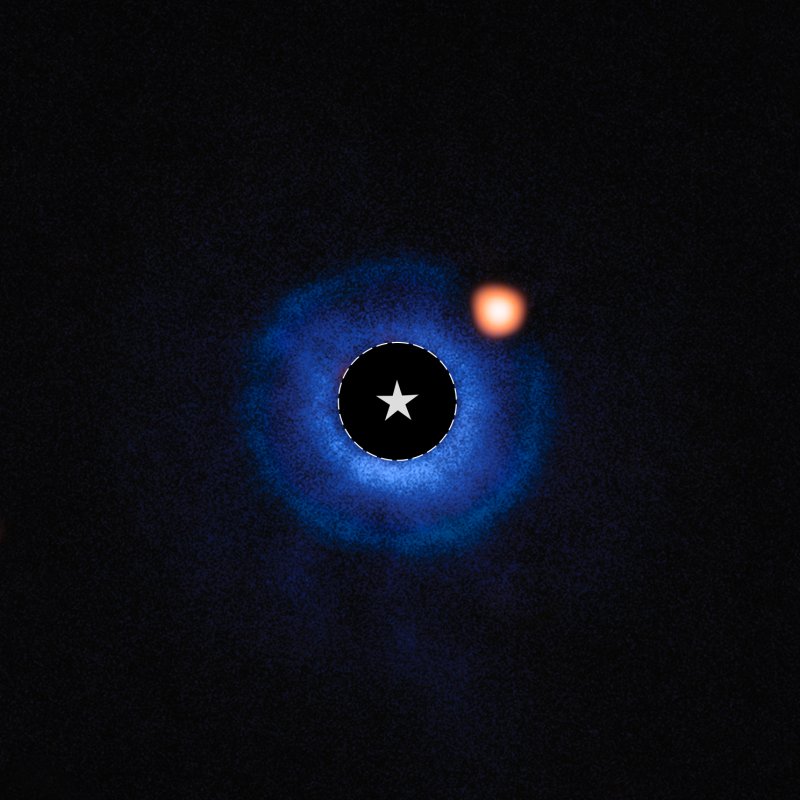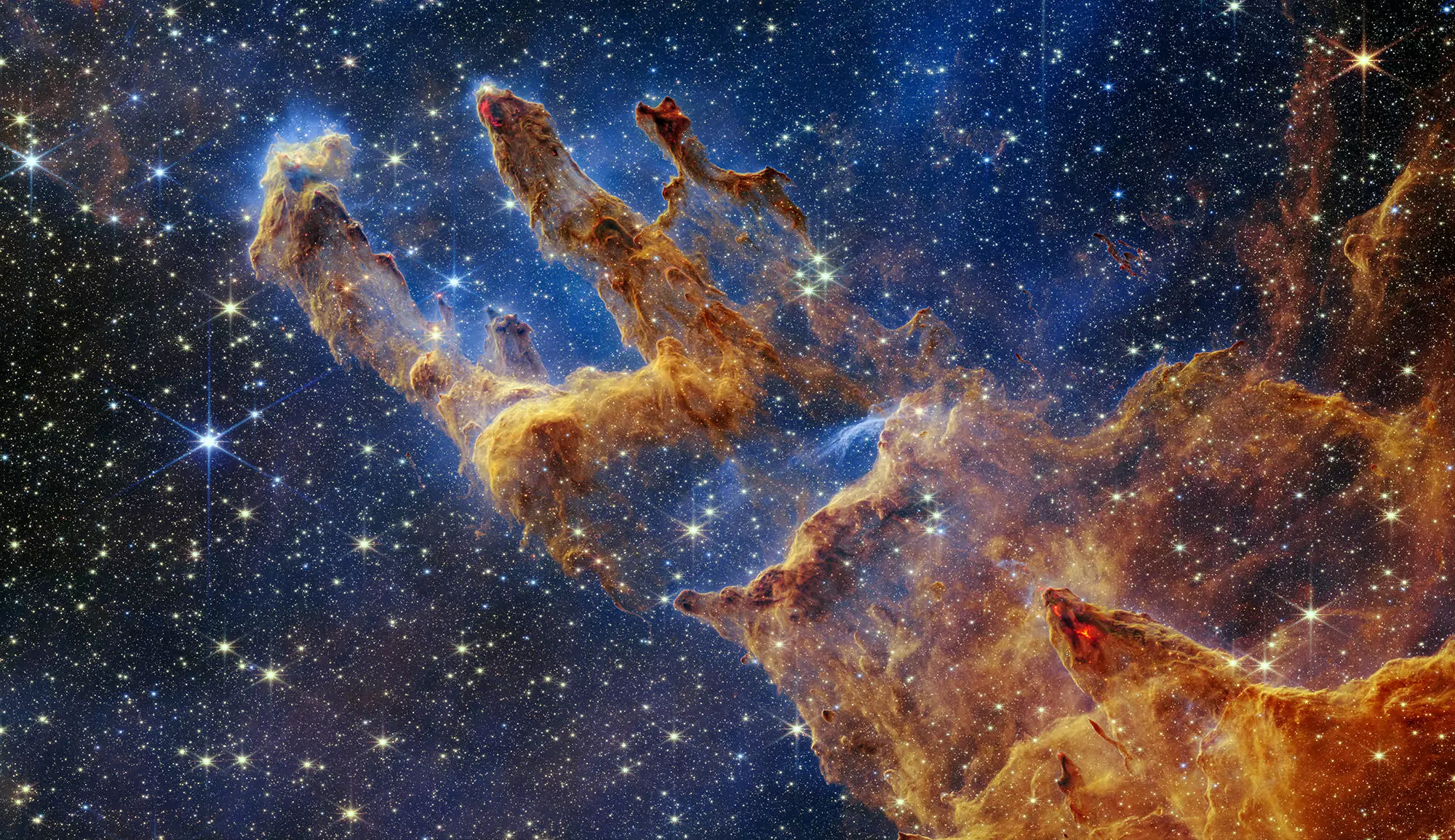This discovery was made possible by the coronograph, a French device designed at Paris Observatory - PSL, and installed on the space telescope’s MIRI instrument.
Named TWA 7 b, the exoplanet is located in a disk of rocky debris and dust around a young star. With a mass equivalent to that of Saturn, it is ten times lighter than previously imaged exoplanets. It was in a particularly thin ring, at the heart of a system observed from the front, that the researchers spotted its infrared signal, clearly distinguishable thanks to the coronograph’s “eclipse” effect.
This milestone marks a turning point in the quest for distant worlds : the JWST has demonstrated its ability to detect young, lighter planets in formation, with temperatures of around 320 degrees Kelvin, in the mid-thermal infrared range. These observations also demonstrate for the first time the planet’s influence on the other bodies in the system, creating a characteristic ring shape. A major step forward in our understanding of the formation of planetary systems.

Fabienne Casoli, President of Observatoire de Paris - PSL congratulates :
"The Webb telescope coronagraphs invented at Observatoire de Paris - PSL are living up to their promise for exoplanet imaging ! Congratulations to Anne-Marie Lagrange and her team for this long-awaited discovery of an exoplanet nestled in the disk of debris and dust surrounding its star".
Mathieu Puech, Vice-President of Observatoire de Paris - PSL, adds :
"Research into exoplanets is one of the major challenges facing astrophysics today, at the crossroads of astronomy, physics and advanced instrumentation. The Observatoire de Paris - PSL is fully involved, notably through the work of the Laboratoire d’Instrumentation et de Recherche en Astrophysique. This discovery, made possible by an instrument designed in part in France, testifies to our active role in a strong international scientific dynamic aimed, ultimately, at imaging Earth-like planets".
Milan Maksimovic, Director of the Laboratoire d’Instrumentation et de Recherche en Astrophysique, highlights the contribution of his teams to this discovery :
"Since the creation of the Laboratoire d’Instrumentation et de Recherche en Astrophysique in 2025, the transverse research team on the observation and modeling of exoplanets has become a scientific pole in its own right within the laboratory. Our R&D efforts, supported in particular by unique experimental benches such as THD2, and our major contributions to several major coronagraphs (JWST-MIRI, VLT-SPHERE, SPHERE+, MICADO-ELT), are accompanied by recognized expertise in high-resolution interferometry and spectroscopy. The very first image of an exoplanet obtained by the JWST embodies the success of this integrated approach".
This project was funded by the European Research Council (ERC) as part of the European Union’s Horizon 2020 research and innovation program (COBREX ; grant # 885593).
